When I was in sixth grade, I wanted to be a marine biologist when I grew up. A major portion of that year’s science curriculum focused on cetaceans, and our class even got to go on a weekend ecology trip down in Provincetown. I adored everything I learned in Ms. Audette’s classes, and she was the first teacher that made me fall head over heels in love with all things science.
Although I stuck with that early ambition of becoming a scientist, my path ultimately led me to study microbes and immune cells – things that are significantly smaller than our great ocean giants. That said, I never lost that first love of the sea.
When we arrived in Northern California and discovered that most hiking trails were off-limits for dogs, we knew we’d need to find an alternative to our go-to activity of hiking. With Sonoma Coast State Park just an hour away, we figured we’d turn our attention to the beach. Ten of the beaches within the state park, as well as a few others around the area, allow leashed dogs to enjoy a bit of seaside recreation. While it’s not quite as thrilling as twenty miles of ever-changing sniffs and squirrel-ridden forests, Sanchez does enjoy a good romp in the sand.
Sonoma Coast State Park turned out to be the perfect place for us. The preserve encompasses sixteen miles of shoreline along California Highway 1, with opportunities for picnicking, hiking, camping, horseback riding, surfing, strolling along sandy beaches, or simply admiring the stunning views. Most of the beaches are accessible via short walking trails, and each offers a unique view of the coastline’s tall cliffs and craggy sea stacks.
The views
While Big Sur and the central coast may be the most iconic and hyped sections of California’s Pacific Coast Highway, the Sonoma Coast can certainly hold its own. The sea cliffs here are more diminutive than their southern counterparts, and you don’t get the dramatic scenes of the Bixby Creek or Rocky Creek Bridges, however I’d argue that Sonoma is nearly as impressive. With rugged rocks and arched islets erupting from the turquoise water, there’s no shortage of amazing scenery along this short ribbon of coastline.
One of our favorite spots was about a mile north of Jenner, and just north of Goat Rock Beach. This is where the Russian River empties into the Pacific, and it’s a haven for harbor seals. A small vehicle pullout atop the bluff offers sweeping panoramas of where the river meets the sea, and you can watch the seals’ playing in the water or resting along the sand spit. Every spring from March to June, this little corner of coastline serves as an important rookery for the seals, where they are safe to forage and raise their young pups. During the summer months, Goat Rock Beach is rife with juveniles playfully socializing and honing their survival skills.
If you plan to visit Goat Rock Beach, you are legally required to give the seals at least 50 yards of space. The animals are protective, unpredictable, and territorial, and should never be disturbed by humans. To observe the seals safely and respectfully, head up to the viewpoint atop the bluff with binoculars or a telephoto. Not only is it best for the animals, you won’t beat the view from up there.
Sonoma Coast beaches
Once you’ve taken in the views from the bluffs, head down to one of the beaches for a breezy stroll and a picnic lunch. In the seventeen miles between Doran Beach, at the south, and Russian Gulch State Beach, at the north, you’ll find nearly two dozen beaches to explore.
For some off-leash time with your furry friend, head to Dillon Beach. To get out for a longer walk, head to Doran Beach, which boasts two miles of coastline. If surfing’s more your jam, the locals love the two Salmon Creek Beaches. We hit up nearly a dozen beaches during our stay and had a great time everywhere we went.
Sanchez especially loved stumbling across the occasional dead crustacean or echinoderm. She would roll and dig and howl with the excitement of a kid on Christmas morning. Considering that she’s such a trail and mountain dog through and through, it was super fun to watch her find so much joy in her new beachy milieu.
Tide pool life
During our three months in Sonoma, I found myself habitually living out my childhood dreams in the intertidal zone, tiptoeing around curiously and shrieking with the excitement of my eleven-year-old self. We visited the beaches and tide pools at least once a week, and every outing was just as magical as the one before. As a biologist and overall geek to the core, I could (and often did) spend hours just sitting and admiring the motionless marine microcosms.
Over the course of our outings, we uncovered a treasure trove of marine life: ochre and bat stars, giant green and sunburst anemone, gooseneck barnacles, eccentric sand dollars, striped and purple shore crabs, California mussels, and a host of snails, limpets and hermit crabs. The diversity and density was like nothing we’d ever seen and, much like Sanchez and her decaying sea creatures, I was like an overenthusiastic kid every time we went out (as evidenced by the sheer number of photos).
As such, it wouldn’t be Follow(ing) That Nerd if there weren’t some fun facts to geek out over. Accordingly, here’s a quick overview of some of the cool tide pool critters you may run into. After learning a bit more about these intriguing invertebrates, keep reading to find out how you can personally help marine biologists in California with ongoing tide pool monitoring programs. We hope that this intro to tide-pooling inspires both a genuine curiosity in the marine world as well as a desire to help preserve these important ecosystems.
Sea stars
There are two types of sea stars that are common to the California coast: ochre stars and bat stars. Ochre stars are vibrant purple or orange in color, and are typically found in clusters, clinging to the cool, wet undersides of rocks in the lower intertidal zone. Ochre stars have the longest lifespan of any sea star in the Pacific Northwest, with the ability to survive for more than twenty years.
Like ochre stars, bat stars inhabit a similarly broad range of the Pacific Coast – from Alaska to Baja. These striking, webbed echinoderms can be found in a wide variety of color variations. From mottled brown, red and orange hues to yellow, purple, or even blue, bat stars are typically found in rocky, intertidal zones and kelp forests along the Pacific seaboard.
Like other sea stars, ochre and bat stars feed on mollusks such as mussels, snails and barnacles. They are important predators within intertidal ecosystems, helping to control fast-growing mussel populations which ultimately boosts biodiversity.
Sea stars have a unique way of eating, and digestion can take hours. Sea stars first use their hundreds of tube feet to grab onto and pry open their prey – some by applying as much as 12 psi of pressure. After forcing the shells apart by less than a millimeter, the echinoderms evert their stomachs (extend them out through their mouths and into the small opening in the shell) to begin digestion outside of their bodies. Once the meat has been dissolved, the sea star then retracts its stomach back into its mouth, leaving behind any fragments of hard shell.
Anemones
Sea anemones are arguably one of the coolest organisms you’ll spot along the intertidal zones of the Sonoma Coast. Along with jellyfish and coral, anemones belong to the phylum Cnidaria. From the Greek word for ‘nettle,’ the common feature of all of these organisms is nematocysts – stinging cells that they use to paralyze their prey.
Anemones are carnivores that feed on small fish, mollusks and crustaceans using the venomous stinging cells (nematocysts) within their crowns of tentacles. Interestingly, researchers have been investigating one of the toxins found in this venom, a compound called anthopleurin, for its potential use as a heart stimulant in the medical field.
Giant green anemones, in particular, are a common sight along the Pacific Coast. The colorful marine invertebrates get most of their vibrant green hue from photosynthetic microalgae that reside within the anemones’ tissues. The two have a symbiotic relationship, with each organism providing essential nutrients for the other.
Anemones are sessile animals, meaning they live a stationary life attached to a rock or other surface by an adhesive ‘foot.’ While their exact lifespan isn’t known, scientists believe some species of anemone can live upwards of 100 years.
Ocean etiquette: If you visit tide pools, be extra careful as you wander around. While animals like starfish and crabs are usually fairly easy to spot, anemone blend in really well with their sandy and/or rocky surroundings. When they are out of water, anemones will close up their colorful tentacles to avoid desiccation. Consequently, they are much smaller and their brown color makes them highly camouflaged.
Sand dollars
Like sea stars, sand dollars belong to the phylum Echinodermata. Sand dollars are a type of burrowing sea urchin and typically reside just beneath the sand.
Much like their sea star relatives, eating is a laborious process for the sand dollar. Feeding on microscopic algae and tiny crustaceans, sand dollars use their spines and tube feet to move food into their mouths, which are located on the underside of their disk-shaped bodies and have five tooth-like spines. It can take up to 15 minutes to grind their food and another two days to fully digest their meal. Interestingly, sand dollars also swallow sand, which acts as a ballast to control buoyancy.
For those who haven’t seen a live sand dollar before, these filter-feeding invertebrates are pretty captivating. Like sea stars, sand dollars have tube feet on the underside of their bodies. They are part of the sand dollar’s water vascular system, which uses hydraulic pressure to propel the structures back and forth. Similar to their starfish and urchin relatives, sand dollars’ tube feet are not only vital for locomotion, but also feeding, waste removal and respiration. I was totally mesmerized by the elegant motion of this little one’s tube feet, and could have watched the graceful ballet for hours.
If you stumble upon a stranded sand dollar, offer a helping hand and move them gently back to the water with their bottom-side (tube feet and mouths) facing down. They can only survive for a few minutes out of the water, and would certainly appreciate an assist in getting back to their cozy maritime homes.
On one of our beach outings, Stephan and I stumbled upon dozens of sand dollars washed up on shore. The next two and half hours turned into a massive rescue mission, as we returned countless animals back to the shallows. Even Sanchez became quite the happy helper, pointing out every small, spiny, purple mound she spotted and alerting us to its presence. With a surprisingly long lifespan of up to ten years, we certainly hope that at least a few of our vulnerable little friends ended up faring okay.
While it is okay to collect dead sand dollars in CA (laws vary by state), it is imperative that you be able to recognize a dead sand dollar from a live one. A live sand dollar will be purple to greyish in color, with spines and tube feet along the upper and lower faces of its body. If a sand dollar is deceased, it will have no spines or tube feet and will have a visible flower-like pattern on top. Additionally, it will be white to off-white in color where the endoskeleton (“test”) has become bleached by the sun. If you aren’t sure if the sand dollar is still living, don’t collect it.
Citizen science
Although sea stars are common and widely-distributed along the Pacific Coast, these tide pool critters are increasingly becoming victims to sea star wasting disease. The disease causes lesions and rapid tissue decay, and is likely caused by a type of copiotrophic marine bacteria. Copiotrophs are microorganisms that live in nutrient-rich environments that are high in organic matter (carbon). When these bacteria are present, they create toxic conditions for the starfish by depleting the water of oxygen – essentially suffocating the animals.
Researchers believe that warming sea temperatures associated with climate change have worsened the disease in starfish. Consequently, there have been a number of massive die-offs in recent years. Because warmer water has (1) less oxygen and (2) more organic matter, copiotrophic (nutrient-loving) microbes are able to thrive. It’s not yet known how well sea stars will be able to rebound from the disease. As such, it’s just one more reminder for us to be mindful of our actions and focus on making even small changes for the good of our planet.
The University of California Santa Cruz (UCSC) has set up a website to monitor sea star wasting syndrome. Citizen scientists (like you) can help out by recording observations of healthy and/or diseased sea stars in their MARINe Observation Log. It only takes a few minutes, and any information (even having seen healthy or no sea stars on your outing) is valuable for tracking populations and facilitating faster intervention.
Resources of interest:
https://phys.org/news/2021-01-oceans-sea-stars.html
https://marine.ucsc.edu/data-products/sea-star-wasting/
Seafood Spots
After a long day of sightseeing and tide-pooling along the coast, you may find yourself in search of a good local meal. If so, head to Bodega Bay. The small fishing village is home to just 1,000 residents, but is locally famous for its fresh seafood, in particular its Dungeness crab. If you’re looking to enjoy some super fresh, locally-caught seafood from family-owned businesses, head to either Spud Point Crab Co. or Fishetarian Fish Market.
Spud Point is owned by a family of local fishermen and is one of the most well-known restaurants in Sonoma County. The small stand offers just a few outdoor picnic tables for diners, and is best known for their clam chowder and crab cakes. The latter are only available on Saturdays and Sundays beginning at 1 p.m. If you want to try them, get there early. There is often a line before noontime and they usually sell out quickly.
Owned by another local family with a long history of fishing, Fishetarian prides itself on serving healthy food from fresh, locally-sourced ingredients. We took some family and friends here, and can give rave reviews to the fish and chips, crab cakes, and chowder. Fishetarian also has a small shop with locally-made goodies, and Stephan couldn’t resist grabbing a couple bags of Petaluma Toffee (whiskey and traditional English).
Pro tip: If you find yourself in Bodega Bay during the springtime, check out the town’s annual Fisherman’s Festival. The community event celebrates the start of salmon season, and has been held annually for the last fifty years. The festival offers a host of seafood, local wines (it is wine country, after all), and live music with all proceeds going to local nonprofits. The 2024 festival will be held the weekend of May 4th & 5th.
Visiting with dogs
If you plan to visit the Sonoma Coast with your furry friend, make sure you know where dogs are and are not allowed. Several beaches serve as a critical nesting grounds for threatened shorebirds, so it’s super important to follow all rules and comply with any pet restrictions. There are plenty of beaches where dogs are allowed, so it shouldn’t be hard to avoid the few that don’t permit pets. Additionally, follow all leash laws. Whether or not you like them, the regulations exist for the well-being of native birds and wildlife as well as for the enjoyment of other beachgoers. If you just have to take your dog off-leash, please head over to Dillon Beach. That’s why it’s there. If you’re curious about other beaches and trails in and around Sonoma Coast State Park, here is a comprehensive list (current as of 2023):
Dog-friendly beaches along the Sonoma Coast (leashed unless noted)
- Dillon Beach (off-leash allowed)
- Pinnacle Gulch
- Doran Beach (day-use fee or Sonoma Country Regional Parks pass)
- Carmet Beach
- Schoolhouse Beach
- Portuguese Beach
- Wright’s Beach
- Shell Beach
- Blind Beach
- Duncan’s Cove
- Marshall Gulch
- Furlong Gulch
- Russian Gulch
- Vista Trail (1 mile; no beach access)
Areas where dogs are not permitted
- Bodega Head (trails or beaches)
- North and South Salmon Creek Beaches
- Miwok Beach
- Coleman Beach
- Goat Rock Beach
- Kortum Trail
- Pomo Canyon Trails
Know before you go
- Swimming is not recommended at beaches along the Sonoma Coast. The surf here is extremely powerful, there are strong rip currents, and water temperatures are cold year-round. Sleeper (sneaker) waves are also a risk, so never turn your back to the water. Goat Rock Beach, where the Russian River empties into the Pacific, is considered the most dangerous beach in California.
- If you go tide pooling, look but never touch. The marine animals here are very sensitive, and even turning over or moving rocks can disturb or kill the sea life. Most animals can quickly become desiccated if they are moved. If you try to pull a sea star off a rock, you can easily damage their tube feet, making it impossible for them to feed. Additionally, be very mindful of where you step and put your hands as you’re wandering around. Anemones can be very hard to spot in the sand or on rocks, and you don’t want to destroy these fragile invertebrates.
- Collecting live specimens is illegal. Intertidal ecosystems are both fragile and incredibly special. Don’t touch, pick up, or collect any wildlife.
- A note on sand dollars. If you see a sand dollar on the beach, you must be certain it is dead before collecting. Live sand dollars will be a purplish grey color with spines on the upper surface and tube feet on the lower face. Sand dollars that are no longer living will be white to off-white in color, having been bleached by the sun, and will have a flower-like pattern that is smooth where the spines have fallen off. The bottom will also be completely smooth, rather than bristly. When it comes to collecting dead organisms, laws vary by state. California currently allows the collecting of deceased sand dollars, but always check local regulations before beach combing.
- Be mindful of nesting birds. Birds nest seasonally in the vegetation along some of the beaches (e.g. Doran and Salmon Creek). How can you help? (1) Do not let your dogs off-leash. (2) Walk on the wet sand well away from the vegetation of the upper beach. (3) Avoid flying kites, as birds can mistake the toys for predators.
- For more information, check out the Sonoma Coast State Park brochure.










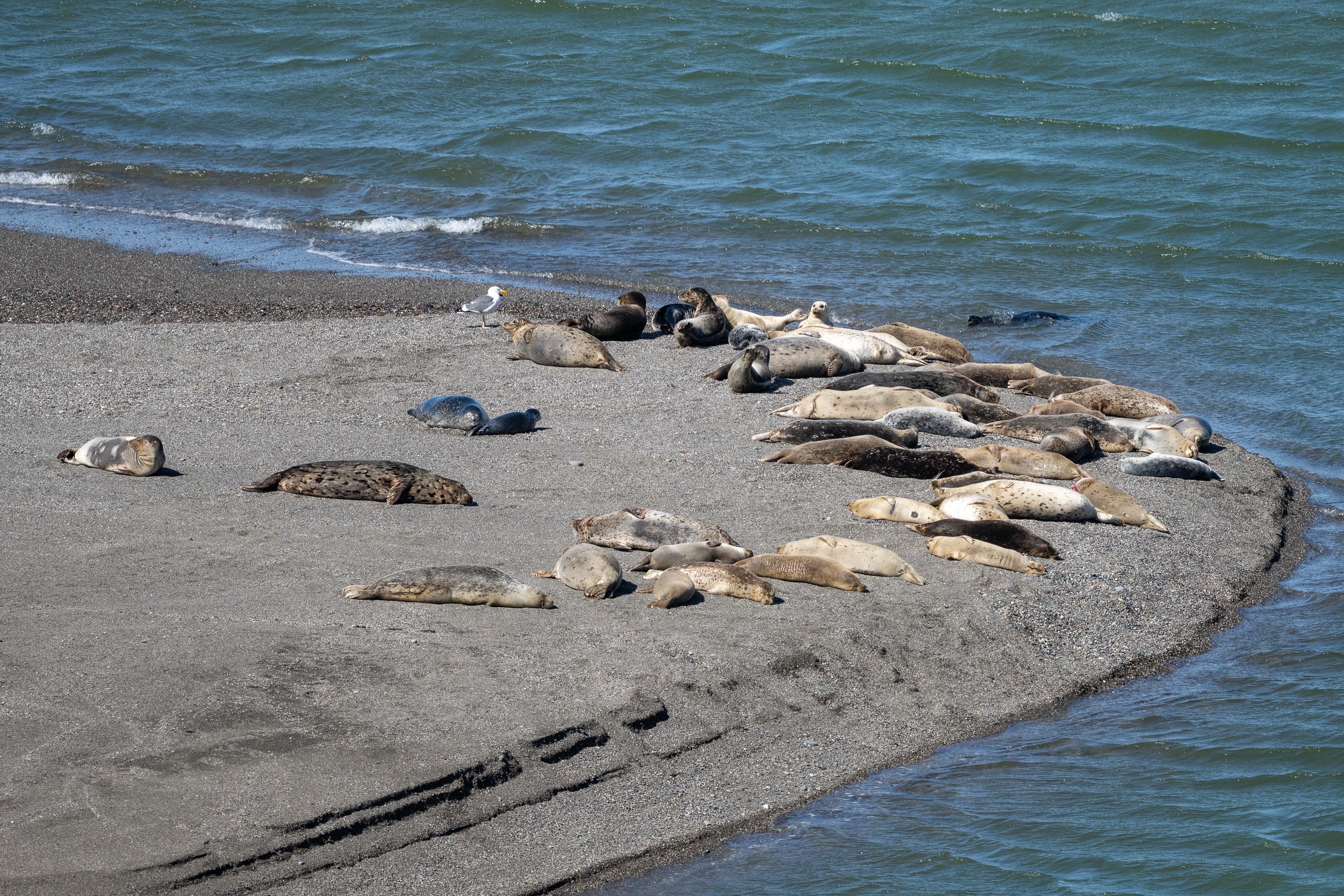
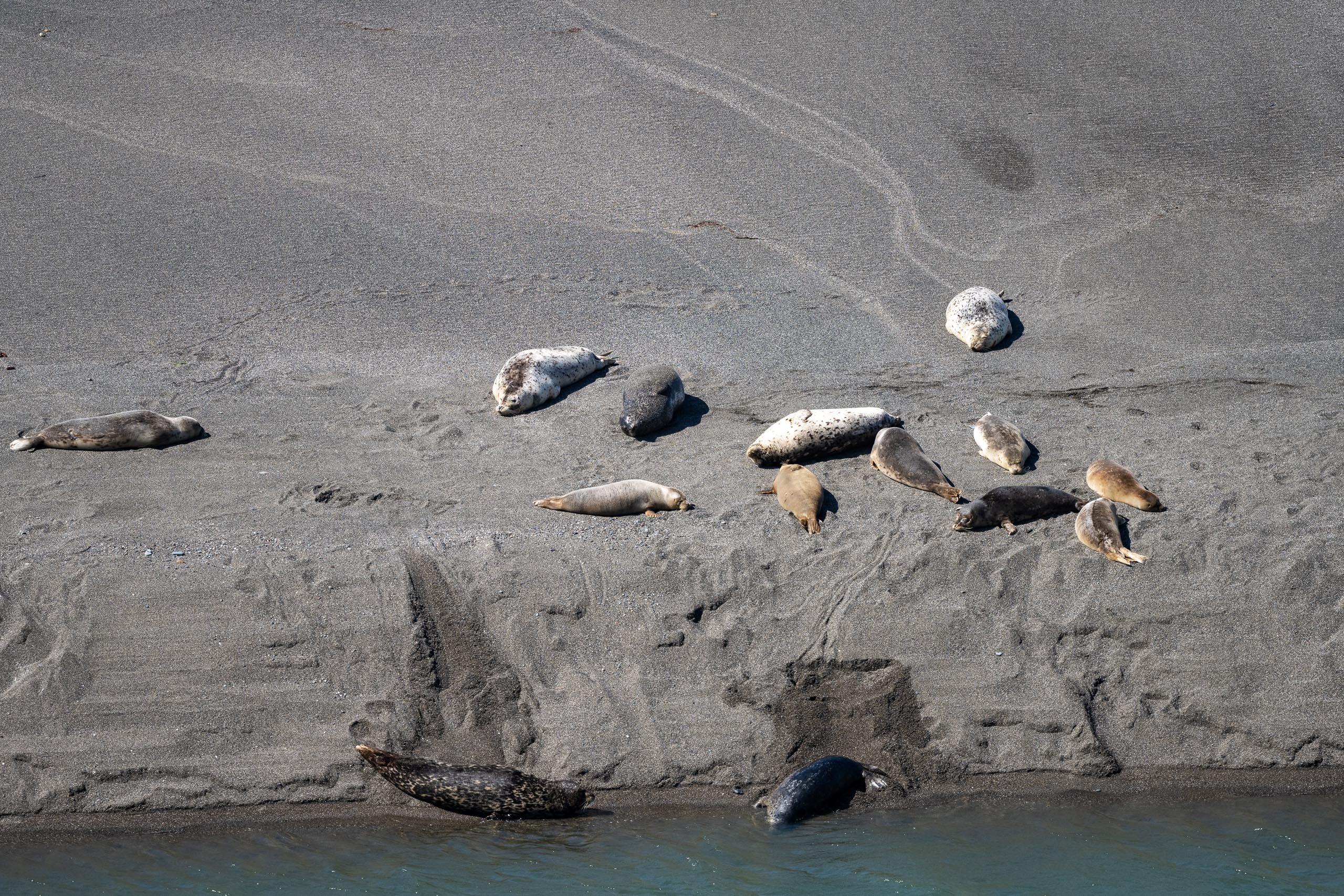







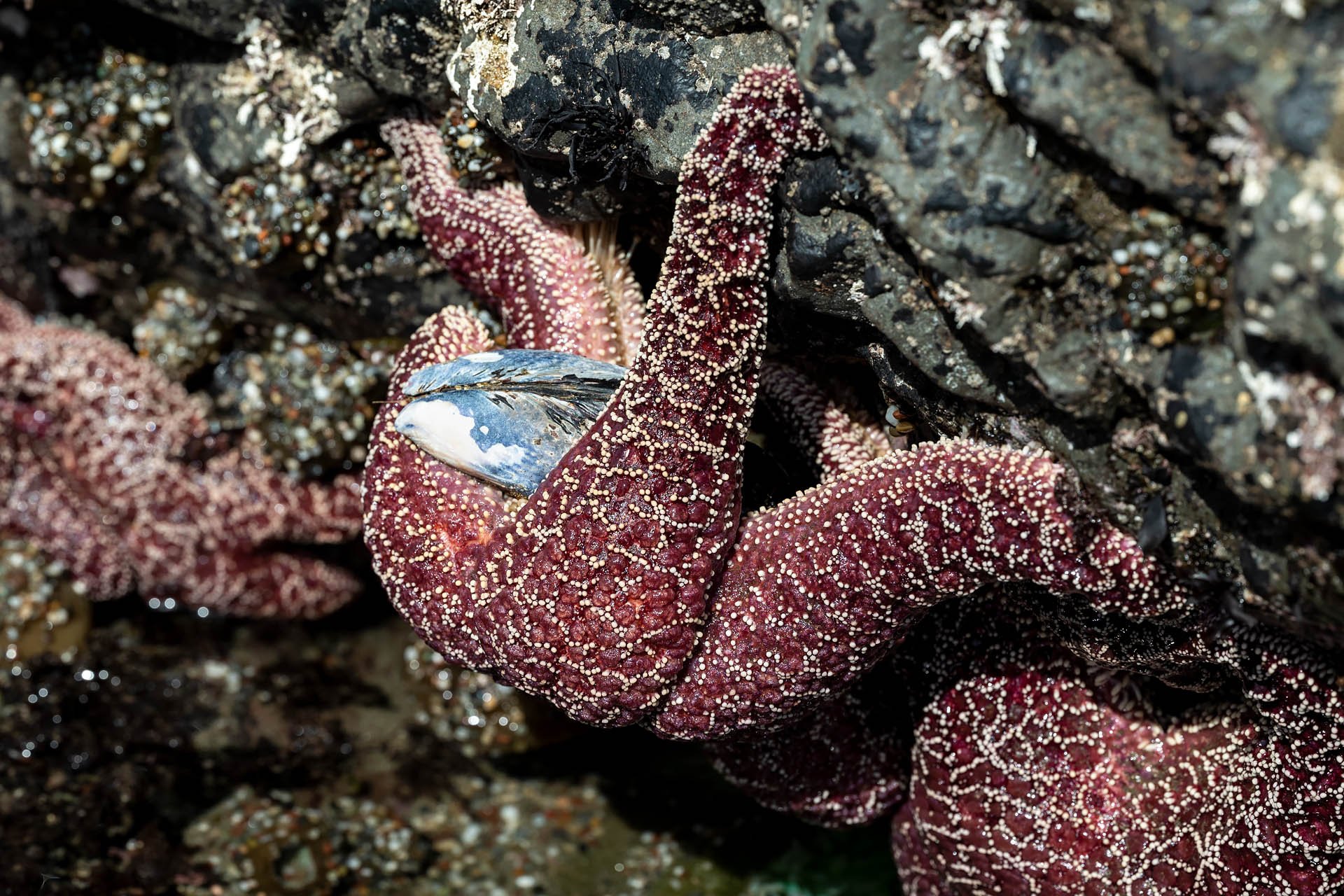






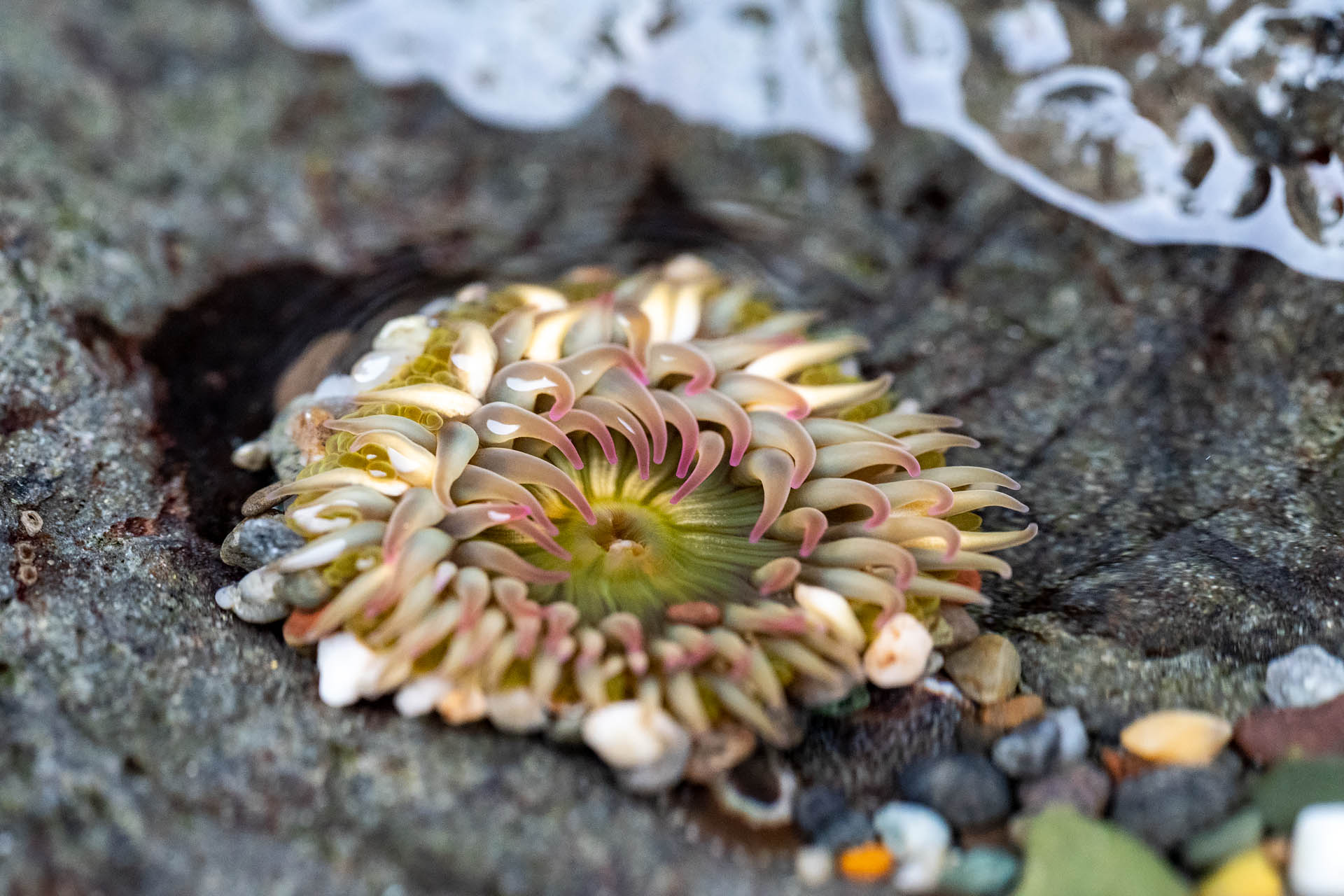







































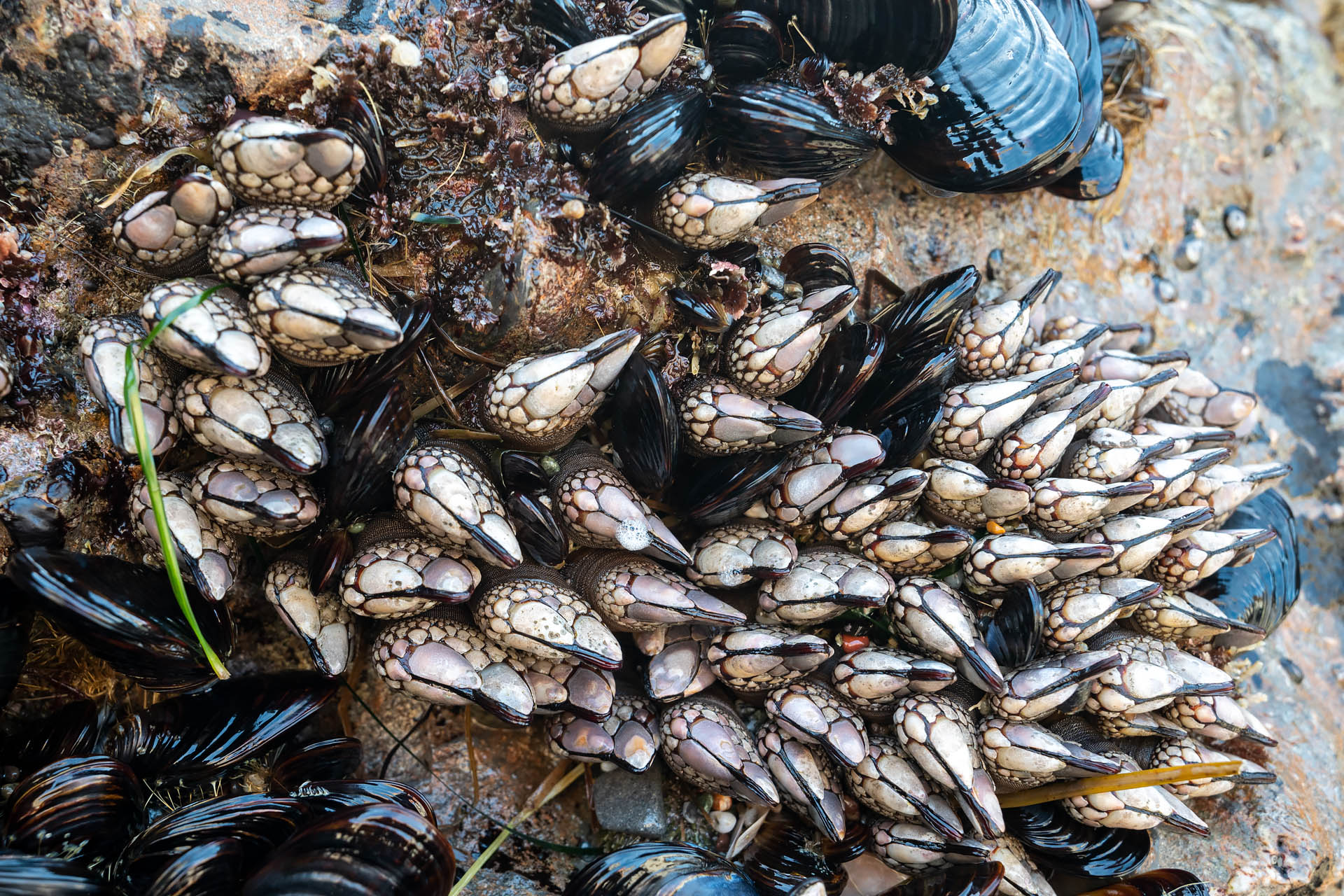

















Learned a lot from you, Young Lady and certainly enjoyed ALL videos! My little love is a hoot the way she wallows and “attacks”!
Your writing is a joy to read! Hi, Stephan!!
Denise! So good to hear from you… and so glad you’re enjoying the blog and all Sanchez’s antics! 🙂